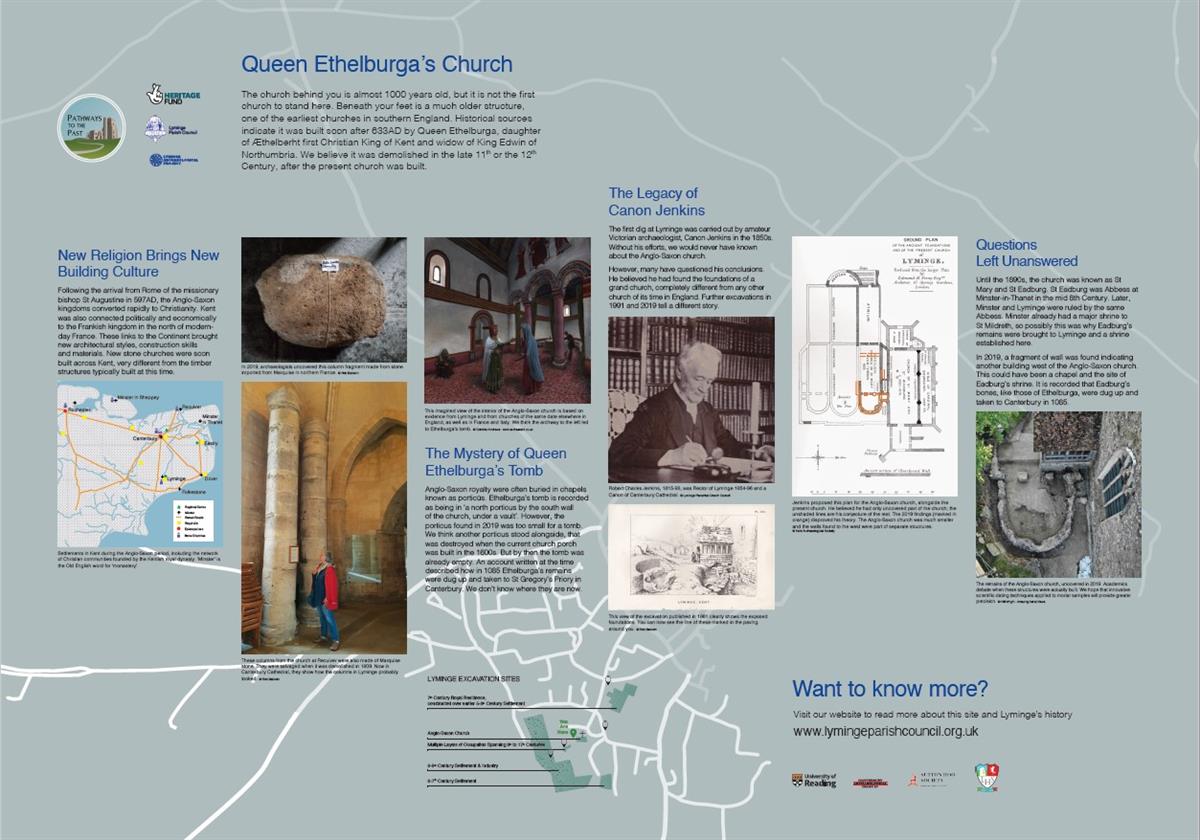The Lyminge Heritage Trail has been created to give an understanding of the archaeology that has been discovered in Lyminge, mostly over the past two decades. Much of this dates to the period between the end of direct Roman rule in the 5th Century and the arrival of the Normans in 1066, extending the history of our community back to a very early date. However, many of the structures were built of wood and have left very little trace. Even the stone buildings are very fragile and have had to be reburied to protect them. The information panels on the trail, and the touchscreen in the church, will thus help you to understand what was found and how Lyminge may have appeared in the past.
Apart from Lyminge Parish Church which is listed Grade 1 by Historic England, there are several other listed historic buildings dating to the 16th, 17th and 18th Centuries in the parish as well as other important structures and monuments. A walk around Lyminge will allow you to see not just these old buildings but also to explore the way the village grew with the coming of the railway in 1885, and see how much of the commercial activity has ebbed away as lifestyles in the late 20th and early 21st Century have changed. The Lyminge Historical Society has produced walking guides to both Lyminge village and Etchinghill. These guides are available at the Premier Stores in Canterbury Road, and the Public Library in Station Road carpark, and also on-line direct from the society itself.
 Queen Ethelburga's Church, an example showing the kind of information displayed on the information panels in the Heritage Trail (© Laura Samuels)
Queen Ethelburga's Church, an example showing the kind of information displayed on the information panels in the Heritage Trail (© Laura Samuels)